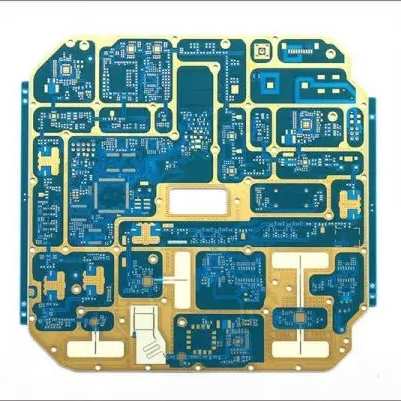Introduction to Rogers Substrate
Rogers substrate, also known as flexible printed circuit boards (FPCBs), are thin, flexible circuit boards made of polyimide film. They were first developed by professor John Rogers and his team at the University of Illinois in the early 2000s. Unlike rigid printed circuit boards (PCBs), Rogers substrates can bend and flex while still maintaining electrical connectivity. This makes them ideal for use in flexible and wearable electronics.
Some key properties of Rogers substrate:
- Made of thin polyimide film, typically 25-50 μm thick
- Can be bent or folded without damage
- Stretchable – can expand up to 30% strain
- Excellent thermal stability up to 300°C
- Compatible with traditional PCB fabrication methods like screen printing
Applications of Rogers Substrate
The flexible and stretchable nature of Rogers substrate enables many new applications not possible with rigid PCBs. Some examples include:
Wearable Electronics
Rogers substrates can be integrated into clothing and worn on the body. For example:
- Health monitoring sensors
- Heated garments
- Fitness trackers
- Medical devices like ECG monitors
Flexible Displays
Displays made with Rogers substrate can bend and curve to fit devices:
- Flexible OLED displays
- E-paper / E-ink displays
- Curved touch sensors
Flexible Solar Cells
Rogers substrate enables thin, lightweight solar cells that can flex and bend. Useful for:
- Portable chargers
- Building-integrated photovoltaics
- Vehicles and transportation
Flexible Lighting
Lighting made with Rogers substrates can take on unique shapes and forms:
- Backlights for displays
- Decorative or wearable lighting
- Signage
Fabrication of Rogers Substrate Circuits

To fabricate circuits on Rogers substrates, traditional PCB manufacturing techniques are used:
Patterning the Substrate
- Photolithography defines the trace patterns on the substrate.
- Etching removes unwanted copper from the substrate.
Depositing Conductive Traces
- Screen printing deposits conductive inks, usually silver nanoparticles.
- E-beam evaporation or sputtering can deposit pure metals.
Components and Connections
- Components like chips are attached by soldering or conductive epoxy.
- Vias and holes can be laser drilled or punched.
Encapsulation
- The circuitry is sandwiched between protective polymer layers.
- This prevents wear and tear during flexing.
With these methods, manufacturers can reliably produce Rogers substrate circuits at high volumes.
The Future of Flexible Electronics
Rogers substrates have enabled the field of flexible electronics. As material science and manufacturing improves, we can expect:
- Smaller feature sizes and thinner circuits
- Better conductivity of printed traces
- More integration of sensors, antennas, power sources and logic
- Development of multilayer flexible circuits
This will lead to even more applications of flexible electronics in consumer devices, healthcare, and beyond. The future is flexible!
Frequently Asked Questions
What is Rogers substrate made of?
Rogers substrate is made of a thin polyimide film, typically around 25-50 microns thick. This gives it mechanical flexibility while also being able to withstand high temperatures.
How flexible can Rogers substrates be?
Rogers substrates are extremely flexible and can bend to tight radii without damage. They can also expand up to 30% in surface strain. This high stretchability allows integration onto curvy or flexing surfaces.
Are Rogers substrates compatible with standard PCB processes?
Yes, Rogers substrates are designed to be compatible with traditional printed circuit board fabrication methods like photolithography, etching, sputtering, and screen printing. This allows flexible circuits to be manufactured efficiently.
Can components be soldered onto Rogers substrates?
Yes, components like integrated circuits or connectors can be soldered onto Rogers substrates using standard soldering techniques. The polyimide material can withstand soldering temperatures.
What are some advantages over rigid PCBs?
Compared to standard rigid PCBs, Rogers substrates are thinner, lighter weight, and can conform to surfaces. Their flexibility allows new applications in wearables and biomedicine. However, rigid PCBs are still superior for complex, multilayer circuits requiring high density interconnects.

Leave a Reply